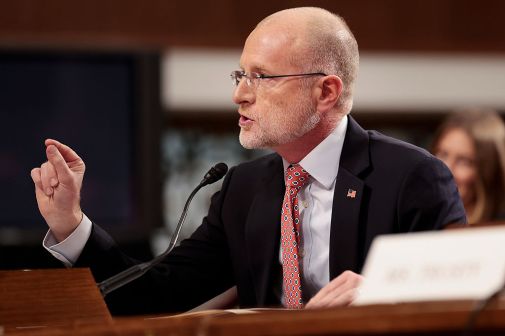How EEOC turned its cloud migration into a success
The chief information officer of one of the government’s smallest agencies provided a roadmap for how cloud integration can work across the federal government during a federal innovation panel Tuesday.
Kimberly Hancher, outgoing CIO of the Equal Employment Opportunity Commission, walked an audience at the Government IT Executive Council Summit through her agency’s movement from its own data center to a private cloud in a year’s time.
Prior to the move, Hancher was in charge of a 1,600-square-foot data center housed in the agency’s Washington, D.C., headquarters. It supported all critical missions systems for the agency’s 2,400 employees as well as the 2,000 state and local government employees who work with the EEOC daily.
With the way the agency’s business processes were moving, Hancher said she realized the headquarters “wasn’t the best place for systems” that were used nationally, especially considering an outage in the D.C. area could bring the entire agency to a halt.
Over five months in 2014, Hancher spent time with a cloud service provider figuring out how to provide a seamless transition with the security needed for the new systems.
She was particularly impressed with the defenses of the provider’s data center. Complete with armed guards and security protocols, the facility was like “a prison,” she said.
“I’m never going to be able to provide that in a downtown building in Northeast Washington,” Hancher said. “It’s just not going to happen.”
As far as the technical parts of the move, Hancher said her team focused on three things: data replication, dual networking and virtualization. All three were crucial during the lead up to shuttering the agency’s data center and flipping the switch on a new system over the course of a weekend.
“We had a couple different unexpected issues during that [transition] time,” Hancher said, “and having the dual networks was really, really important.”
From the beginning stages until the agency finally went live with its private cloud, Hancher said relying on her team’s “progressive elaboration” was key in making the transition a success.
“Progressive elaboration is just a way of saying you know a little bit more today than you do yesterday,” Hancher said. “My philosophy is you have a plan, and until you change that plan, that’s the plan. Things happen, there are new insights. We did a lot of planning and coordination, and the provider was very much part of the team. It was about working together toward the same goal.”
A big part of that goal was the cost savings that moving to the cloud brought the agency. Hancher said her one-time costs were around $100,000 (“That’s not a large number”) with recurring costs coming in at $10,000 per month (“That’s very affordable”) compared to a total agency IT budget of $14 million to $20 million.
There was savings in other areas, Hancher said. The move to cloud has freed up her staff’s ability to tackle other projects, like a full-time Unix system administrator now helping with deployment of local area network infrastructure at EEOC’s satellite offices.
“The big savings is in a force multiplier,” she said. “I get the people to work on other priorities.”
After describing how successful the move was, Hancher’s fellow panelists discussed what it would take to see the same thing happen at their agencies. Beyond savings and technical capabilities, Ann Dunkin, CIO of the Environmental Protection Agency, focused on a buzzword the federal government is familiar with: “culture change.”
“Once upon a time, the system administrator had a box under their desk, then we said, ‘the box can’t be under your desk, it needs to be in this closet here,'” Dunkin said. “Then, the closet turned into a big data center. Then in our case, we said now that data center is going to be several hundred miles away from the most of the folks who use these applications.”
She added, “Culturally, it’s been a challenge for people to experience that ‘I don’t know where my stuff is’ feeling.”






